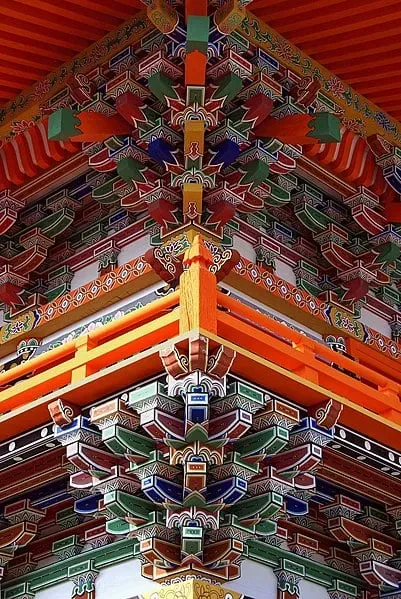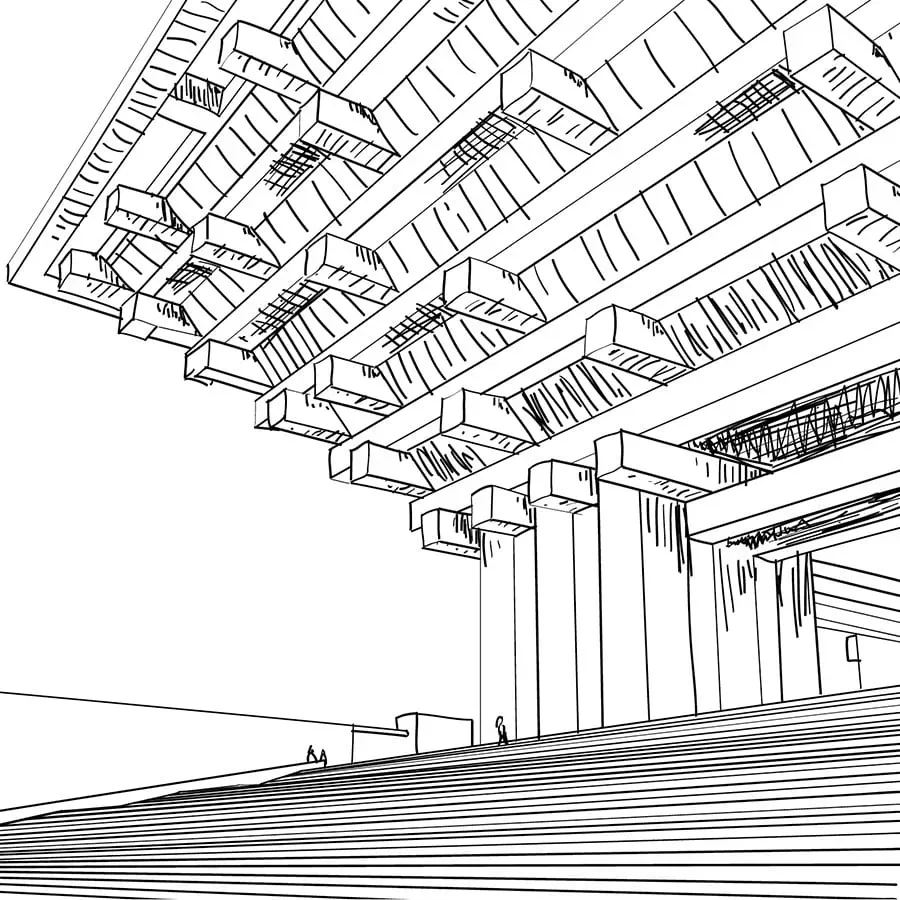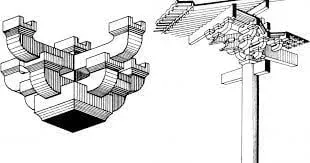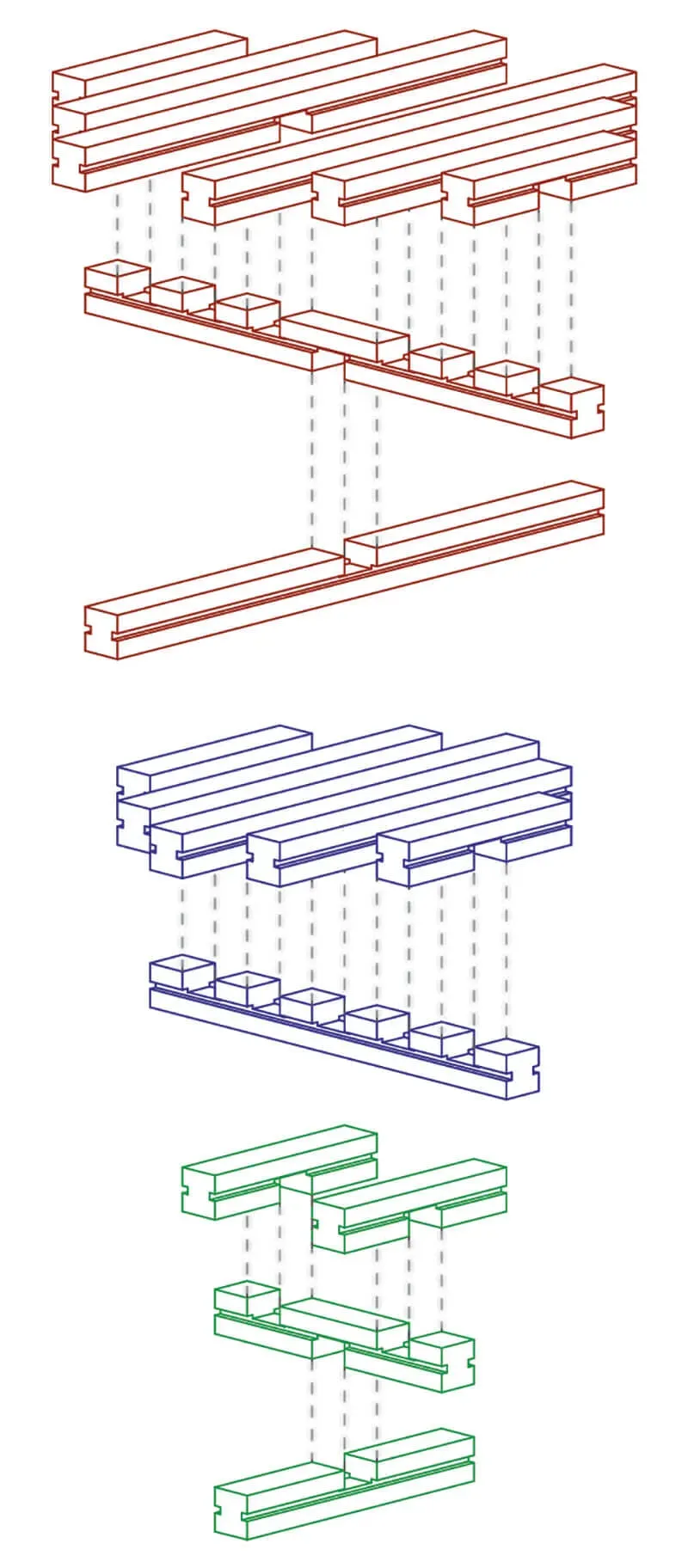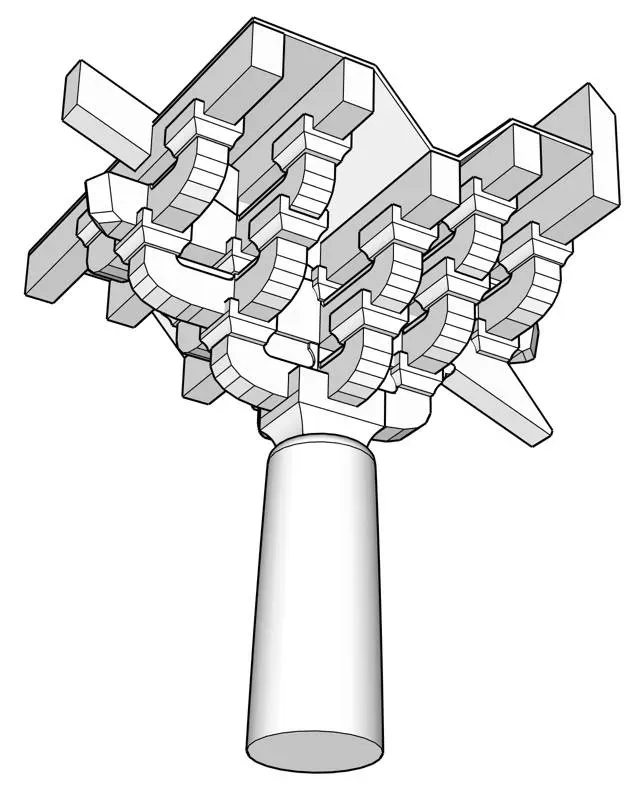On tree-like architectures, pressure and its distribution
Gaudi's Sagrada Familia's tree-inspired columns contribute significantly to the basilica's structure. This concept was prevalent in past architectural designs, including China's Forbidden City, where an interlocking timber system called "Dougong" was used.
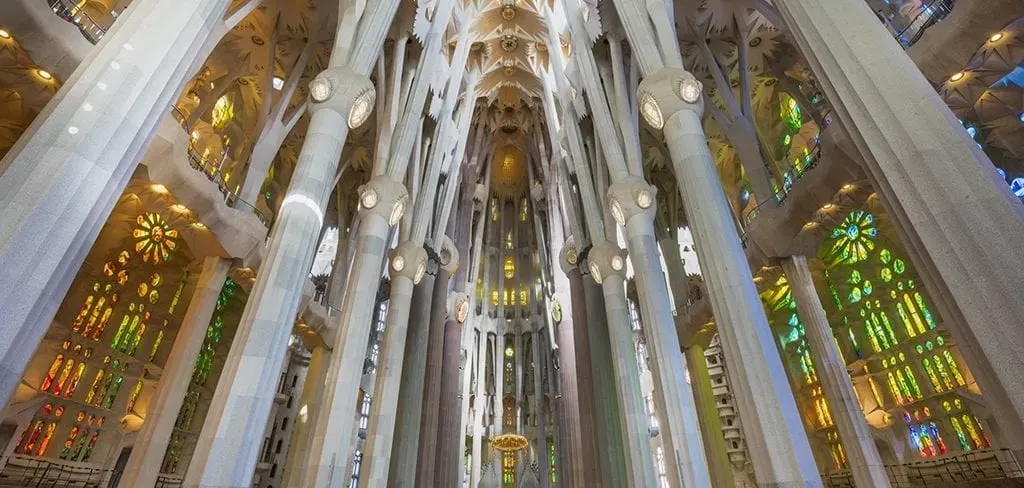
The helix-shaped double-twist columns of the Sagrada Familia creates an upward moving feeling—connecting the earth with the heavens. Gaudí's design of the tree-like columns, with their branches spreading out to the centre of gravity, are essential elements of the structural mechanic of the basilica—building the appearance of a lush forest. They are forming the foundation of one of the most impressive buildings in the world.
But Gaudí was not the first to create architectures with tree-inspired dendriform and fractal-like branching structures. Throughout history, there have been many architects who adopted these tree-like patterns.
I recently watched a documentary about the Forbidden City in China—a palace complex in the centre of Beijing built by the third emperor of the Ming Dynasty, Yongle, between 1406 and 1420. At times, a million enslaved people and more than 100,000 artisans have built it. The Chinese emperors of the Ming and Qing dynasties lived and ruled in the Forbidden City until 1911. Access for the ordinary people was denied, which explains the name Forbidden City. In 1987, it was declared a World Heritage Site by UNESCO.
Build in an earthquake-prone zone, the palaces and buildings built of wood would not have survived the last 600 years if the Chinese had not invented a particular construction element called "Dougong"—a multi-piece interlocking timber.
Dougongs are connecting elements essential to the timber frame construction of a traditional Chinese building. The walls in these structures are non-load-bearing (curtain walls) and are sometimes made of latticework, mud or other fragile materials. The function of the walls is to delineate spaces rather than to support loads.
Several interlocking sets of brackets are formed by placing a large square wooden block (Dou) on a load-bearing beam to provide a solid base for the horizontal yoke beams (Gong) to support the beam or other Gongs above.
The function of the Dougong is to provide increased support for the weight of the horizontal beams spanning the supporting elements (columns, beams) by transferring the weight of the horizontal beams to the columns over a larger area. This process can be repeated several times and run over several floors.
Adding multiple such interlocking kits or Dougongs places less stress on the horizontal beams as their weight transfers to a column. Multiple Dougongs also allow such structures to be less rigid and thus better resist the loads imposed by earthquakes.
Companies or people can also apply this principle. Both need intelligent mechanisms with which they can distribute pressure or strong shocks from outside so that they do not cause any damage. A flexible Dougong that distributes the pressure can be more effective than a hard armour where the pressure is supposed to bounce.
Do you also have a Dougong?
